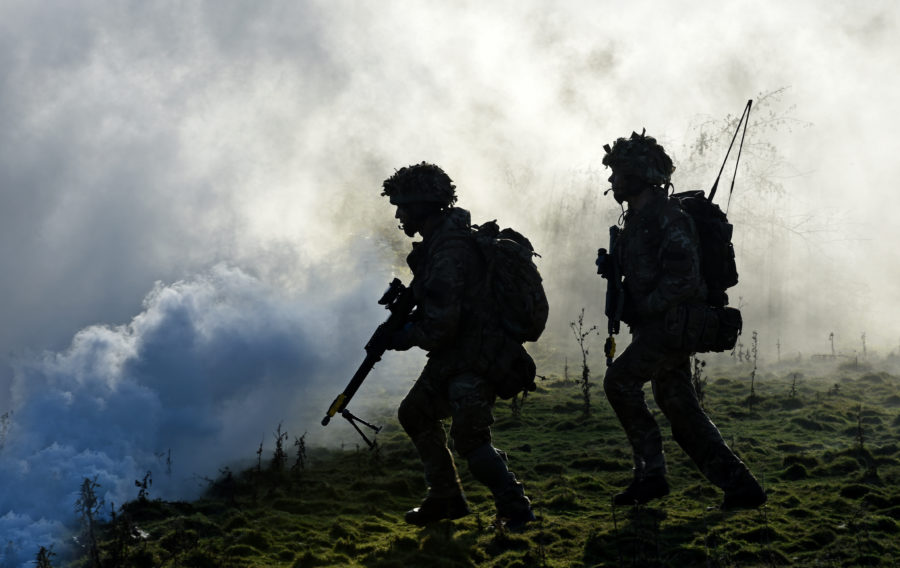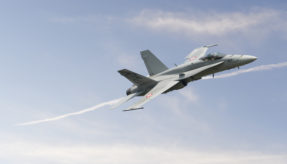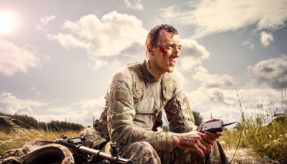
The global wearables market has grown exponentially; new statistics from analyst firm CSS Insight claim the market will hit $34 billion in just over two years’ time and is set to grow from 84 million units in 2015 to 411 million units in 2019. Within the wearables market, ear-based devices, or ‘hearables’, are the fastest-growing segment. According to recently published statistics from Juniper Research, the hearables market will grow sevenfold, from 43 million devices in use during 2017 to 285 million devices in use by 2022.
For any device to be considered for use in defence, it needs to meet stringent standards. This is why some innovators are building military-grade wearables, specifically designed to support the welfare of soldiers in training scenarios and operations. But what are the circumstances that have driven the appeal of this technology for defence?
Determination versus Preservation
Defence personnel often push themselves to the physical limit in the pursuit of their public duties. Combined with heavy kit – an average of around 55-60 kilograms of full combat gear, boots, weapons and body armour – and extreme environments or temperatures, duty can take its toll. One of the biggest challenges for defence personnel on missions in hot climates is heat stress, caused by the body’s (and sometimes kit’s) inability to allow proper thermoregulation. The British Medical Journal defines heat stress as being where the core body temperature (CBT) reaches 40°C with central nervous system (CNS) dysfunction, which can lead to delirium, coma and death.
In 2016, “superfit” Cpl Joshua Hoole died after an eight-mile test march in the Brecon Beacons on the hottest day of the year. Just three years earlier, three SAS candidates died in similar conditions around Pen-y-Fan, the highest peak in southern Britain. These are extreme cases, but heat stress in milder forms – heat cramps and heat exhaustion – is a common occurrence and can lead a soldier to become dehydrated, delirious and unable to perform to the best of their abilities. This can impact operational effectiveness, require possible emergency evacuation, loss of manpower or worse. The 2016 incident refocused scrutiny on the measures that military organisations, like the MOD, are putting in place to keep personnel safer in challenging conditions.
Advancing Soldier Safety
After these deaths on the Brecon Beacons, the Defence Medical Services (DMS) called for the development of innovative solutions to prevent heat injury. Bodytrak is the first ear-based physiological monitor to measure Core Body Temperature (CBT) and Heart Rate (HR) unobtrusively, continuously, in real time, with Gold Standard accuracy. It also tracks and measures other values including Heart Rate Variability (HRV), volume of oxygen (Vo2 Max), distance and cadence. It also includes fall detection and features two-way communications in one neat device. Due to the ear’s proximity to the brain, the device can pick up very accurate and immediate changes to bodily vital signs in real time more reliably than wrist-based wearables or chest straps. Chest straps can also be uncomfortable and can only measure skin temperature, so they cannot give an accurate CBT reading.
From an earpiece, data can be sent wirelessly to the cloud, or via partner peripherals like ruggedised tablets, smartwatches or communications devices. This gives wearers and commanders immediate access to physiological and biometric data in real time. The earpiece itself can also warn the wearer of any physiological change. Immediate access to the data could mean a significant reduction of the risk of heat injury or other physiological stresses, through timely intervention. For example, if a soldier falls in the field and a medic or squadron leader or commander has immediate access to their physiological data, they would have a better picture of what response is required and can act appropriately.
Data is analysed via a cloud-centric IoT platform. The insight gained from the data can be used to detect performance patterns and benchmark normal and peak physical states, helping to understand typical responses to physiological stress. This helps improve physical performance and recovery time, and better informs training and warfare strategies. Data can also be stored locally on the device for download later.
MOD’s Modern Future
The MOD is going through a period of significant modernisation and digitisation with initiatives such as C4ISR, which are creating a leaner, more agile IT operation, improving support to soldiers actively involved in training and warfare. It’s fast becoming recognised that monitoring technologies need to be adopted across military populations to reduce the risk of serious injury, reducing liabilities for defence organisations as a result.
Wearables, and more specifically hearables, can help deliver the necessary understanding of each soldier’s physiology, and help protect each soldier from injury. Data captured can help construct a deep understanding about how soldiers cope physiologically across all environmental challenges, both in training and in battle. Through measuring multiple vital signs in real time, via one device, integrated into existing communications systems, physiological warning signs can be identified enabling early intervention. In managing the welfare of the military’s most valuable asset, its personnel, the role of monitoring technology and use of accurate physiological data will give the military a significant advantage.
By Leon Marsh, CEO at Bodytrak
Image courtesy of PhotoStock10 / Shutterstock.com







